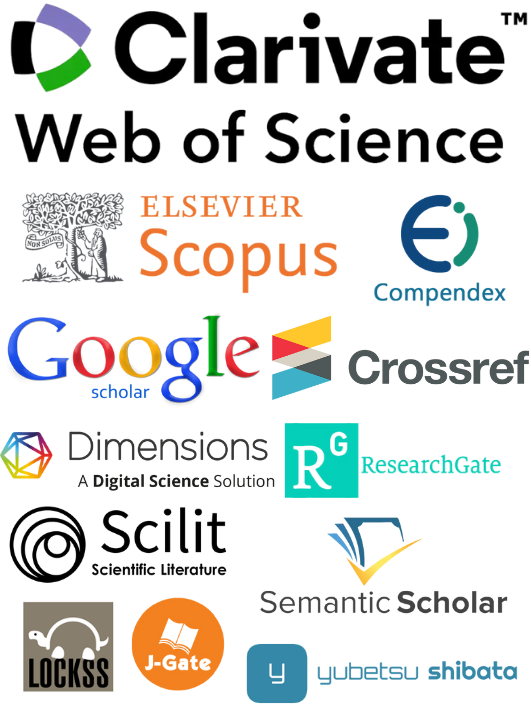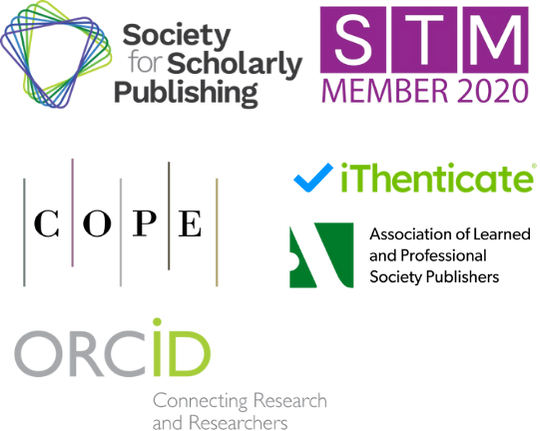Auxiliary Ligand Geometry Control in Metal-Organic Framework Synthesis: V-Shaped Architecture and Properties
DOI:
https://doi.org/10.71222/gdf9me66Keywords:
metal-organic frameworks, V-shaped ligands, auxiliary ligands, framework topology, gas separation, catalysisAbstract
Metal-organic frameworks (MOFs) represent a revolutionary class of crystalline porous materials that have garnered significant attention due to their exceptional structural diversity and multifunctional properties. The precise control of MOF topology and properties through auxiliary ligand geometry has emerged as a critical strategy in rational framework design. This comprehensive review examines the role of V-shaped auxiliary ligands in directing MOF synthesis, with particular emphasis on their influence on framework topology, interpenetration behavior, and resulting functional properties. V-shaped ligands, characterized by their angular geometric configuration, offer unique advantages in creating specific coordination environments that can be systematically exploited to achieve desired structural outcomes. The investigation encompasses various synthetic approaches, structural modifications, and property optimization strategies that leverage V-shaped auxiliary ligands. Through detailed analysis of recent advances in this field, we demonstrate how the geometric constraints imposed by V-shaped ligands can be utilized to control porosity, enhance gas separation efficiency, and optimize catalytic performance. The findings reveal that V-shaped auxiliary ligands serve as powerful tools for achieving non-interpenetrated frameworks with enhanced stability and tailored functional properties, making them invaluable components in next-generation MOF design strategies.
References
1. Q. Yang, X. Chen, Z. Chen, Y. Hao, Y. Li, and Q. Lu et al., "Metal–organic frameworks constructed from flexible V-shaped ligands: adjustment of the topology, interpenetration and porosity via a solvent system," Chem. Commun., vol. 48, no. 80, p. 10016, 2012, doi: 10.1039/c2cc35340g.
2. R.-B. Lin, S. Xiang, H. Xing, W. Zhou, and B. Chen, "Exploration of porous metal–organic frameworks for gas separation and purification," Coord. Chem. Rev., vol. 378, pp. 87–103, 2019, doi: 10.1016/j.ccr.2017.09.027.
3. Y.-P. Li, J.-J. Ni, S.-C. Fan, and Q.-G. Zhai, "Auxiliary ligand-directed assembly of a non-interpenetrated cage-within-cage metal-organic framework for highly efficient C2H2/CO2 separation," Chin. J. Struct. Chem., vol. 42, no. 6, p. 100070, 2023, doi: 10.1016/j.cjsc.2023.100070.
4. F. Ding, N. Su, C. Ma, B. Li, W.-L. Duan, and J. Luan, "Fabrication of two novel two-dimensional copper-based coordination polymers regulated by the 'V'-shaped second auxiliary ligands as high-efficiency urease inhibitors," Inorg. Chem. Commun., vol. 170, p. 113319, 2024, doi: 10.1016/j.inoche.2024.113319.
5. H. Furukawa, K. E. Cordova, M. O'Keeffe, and O. M. Yaghi, "The chemistry and applications of metal-organic frameworks," Science, vol. 341, no. 6149, p. 1230444, 2013, doi: 10.1126/science.1230444.
6. D. Bradshaw, A. Garai, and J. Huo, "Metal–organic framework growth at functional interfaces: thin films and composites for diverse applications," Chem. Soc. Rev., vol. 41, no. 6, pp. 2344–2381, 2012, doi: 10.1039/c1cs15276a.
7. G. Xie, W. Guo, Z. Fang, Z. Duan, X. Lang, D. Liu, G. Mei, Y. Zhai, X. Sun, and X. Lu, "Dual-metal sites drive tandem electro-catalytic CO₂ to C₂⁺ products," Angew. Chem., vol. 136, no. 47, p. e202412568, 2024, doi: 10.1002/ange.202412568.
8. J.-R. Li, R. J. Kuppler, and H.-C. Zhou, "Selective gas adsorption and separation in metal–organic frameworks," Chem. Soc. Rev., vol. 38, no. 5, p. 1477, 2009, doi: 10.1039/b802426j.
9. G. Férey, "Hybrid porous solids: past, present, future," Chem. Soc. Rev., vol. 37, no. 1, pp. 191–214, 2008, doi: 10.1039/b618320b.
10. Y.-B. Huang, J. Liang, X.-S. Wang, and R. Cao, "Multifunctional metal–organic framework catalysts: synergistic catalysis and tandem reactions," Chem. Soc. Rev., vol. 46, no. 1, pp. 126–157, 2017, doi: 10.1039/c6cs00250a.
11. Y.-M. Wang, G.-H. Ning, and D. Li, "Multifunctional Metal‐Organic Frameworks as Catalysts for Tandem Reactions," Chem. Eur. J., vol. 30, no. 26, 2024, doi: 10.1002/chem.202400360.
12. F. Ding, C. Ma, W.-L. Duan, and J. Luan, "Second auxiliary ligand induced two coppor-based coordination polymers and urease inhibition activity," J. Solid State Chem., vol. 331, pp. 124537–124537, 2023, doi: 10.1016/j.jssc.2023.124537.
13. I. A. Ibarra, S. Yang, X. Lin, A. J. Blake, P. J. Rizkallah, and H. Nowell et al., "Highly porous and robust scandium-based metal–organic frameworks for hydrogen storage," Chem. Commun., vol. 47, no. 29, p. 8304, 2011, doi: 10.1039/c1cc11168j.
14. K. Salehi, M. Rahmani, and S. Atashrouz, "Hydrogen storage capacity in metal-organic frameworks: Towards elevating pre-dictions through ensemble learning with a comprehensive preprocessed dataset," Int. J. Hydrogen Energy, vol. 118, pp. 251–267, 2025, doi: 10.1016/j.ijhydene.2025.03.042.
15. F. Ding, C. Hung, J. K. Whalen, L. Wang, Z. Wei, and L. Zhang et al., "Potential of chemical stabilizers to prolong urease inhi-bition in the soil–plant system," J. Plant Nutr. Soil Sci., vol. 185, no. 3, pp. 384–390, 2022, doi: 10.1002/jpln.202100314.
16. P. Horcajada, R. Gref, T. Baati, P. K. Allan, G. Maurin, and P. Couvreur et al., "Metal–Organic Frameworks in Biomedicine," Chem. Rev., vol. 112, no. 2, pp. 1232–1268, 2011, doi: 10.1021/cr200256v.
17. W. Lu, Z. Wei, Z.-Y. Gu, T.-F. Liu, J. Park, and J. Park et al., "Tuning the structure and function of metal–organic frameworks via linker design," Chem. Soc. Rev., vol. 43, no. 16, pp. 5561–5593, 2014, doi: 10.1039/c4cs00003j.
18. J. Huang, H. Dong, L. Geng, R. Xu, M. Liu, and Z. Guo et al., "Rational design and controlled synthesis of metal-organic frameworks to meet the needs of electrochemical sensors with different sensing characteristics: An overview," Compos. Part B Eng., vol. 281, pp. 111536–111536, 2024, doi: 10.1016/j.compositesb.2024.111536.
Downloads
Published
Issue
Section
License
Copyright (c) 2025 Maya S. Caldwell (Author)

This work is licensed under a Creative Commons Attribution 4.0 International License.


